- Why Nepal for UK travelers?
- Planning Your Trip from the United Kingdom
- When to Go Nepal from the United Kingdom
- Choose Your Tour and Trek from the United Kingdom
- Booking Your Flight from the UK
- Preparing for Your Trip
- Nepal Visa for a British citizen
- Cost of tour and trek in Nepal, including flights from the United Kingdom
- Time takes to fly from the UK to Nepal
- Popular tourist destinations in Nepal for British Citizens
- The local currency in Nepal and the use of GBP
- Safe for UK citizens to travel to Nepal
- Best trekking routes and hiking trails in Nepal
- Luxury tour and trek in Nepal for UK (British) citizens
- Frequently Asked Questions (FAQs) for UK Travelers to travel Nepal
Are you an adventurer, an explorer, or a lover of landscapes that make your heart leap? Does the idea of stepping onto the roof of the world thrill you to your core? If your answer is yes, then a tour of Nepal, complete with an exhilarating trek, could be your next unforgettable journey. Nepal is a country of breathtaking beauty, cultural richness, and warm-hearted people, making it a top destination for adventure seekers worldwide. This blog post will guide you through everything you need to know to book a Nepal tour and trek with a flight from the United Kingdom.
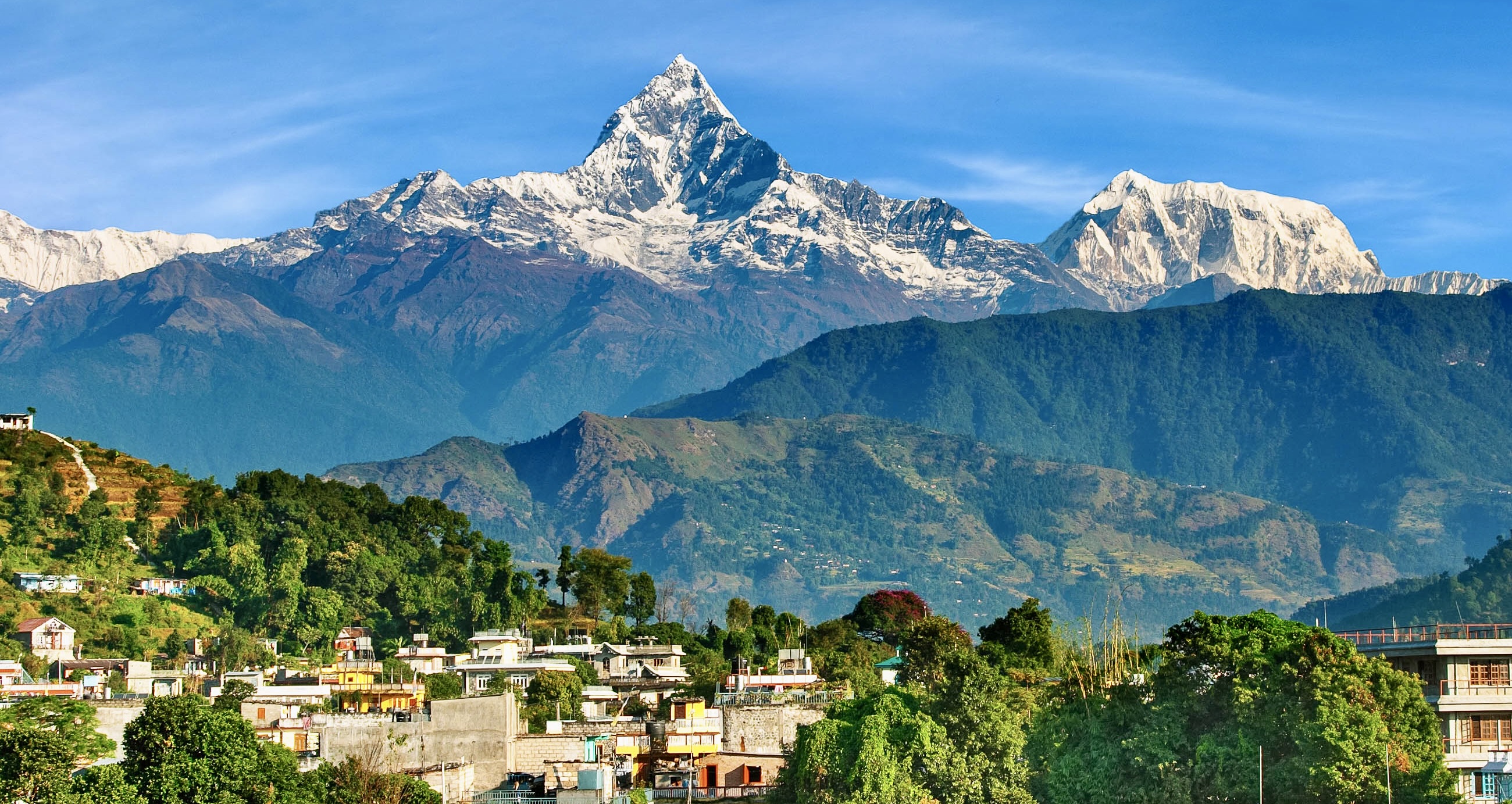
Why Nepal for UK travelers?
Nepal is a destination that calls to travelers for a variety of reasons. Here are some of the key reasons why you might want to consider a visit:
- Mountains: Nepal is home to eight of the world's ten tallest mountains, including Mount Everest, the highest peak on Earth. It's a mountaineer's paradise, offering a wide variety of trekking routes and stunning views.
- Rich History and Culture: Nepal boasts a deep historical and cultural heritage. The cities of Kathmandu, Bhaktapur, and Lalitpur, also known as the Kathmandu Valley, have seven UNESCO World Heritage Sites. The architecture, arts, and local customs give travelers a glimpse into the country's rich past.
- Diverse Wildlife: National parks such as Chitwan and Bardiya offer opportunities to see a variety of wildlife, including Bengal tigers, one-horned rhinoceros, and different species of birds and butterflies.
- Adventure Activities: Besides trekking, Nepal is a haven for adventure activities such as white-water rafting, paragliding, bungee jumping, and mountain biking.
- Religious Significance: Nepal holds significant spiritual importance. It's the birthplace of Lord Buddha and hosts a large number of Hindu temples and Buddhist monasteries.
- Friendly People: The people of Nepal are known for their warmth and hospitality. Engaging with locals adds a unique, heartwarming dimension to your trip.
- Culinary Delights: Nepalese cuisine is a delightful blend of flavors. Trying local dishes like Dal Bhat (lentil soup with rice), Momo (dumplings), and Gorkhali Lamb is an integral part of the travel experience.
Nepal is a country that appeals to a wide range of interests, whether you're a nature lover, history buff, culture enthusiast, adventure seeker, or spiritual pilgrim.
Planning Your Trip from the United Kingdom
Planning a trip to Nepal from the United Kingdom involves several steps, from booking flights and organizing visas to selecting accommodations and packing appropriate clothing. Here's a detailed step-by-step guide:
Booking Your Flights
Several airlines offer flights from the UK to Nepal. While there are no direct flights, most journeys will include one stopover, typically in the Middle East or Asia. Airlines such as Emirates, Qatar Airways, and Turkish Airlines are popular choices due to their reliable service. Flight duration is around 14-16 hours, including the stopover.
For the best prices, it's advisable to book your flights several months in advance. Consider setting up price alerts on flight comparison websites to ensure you get the best deal.
Visa Requirements
As a British citizen, you are eligible for a visa on arrival in Nepal. This can be obtained at Kathmandu's Tribhuvan International Airport. However, to avoid long queues and possible issues upon arrival, it's recommended to apply for your visa online before you travel.
Travel Insurance
It's important to have travel insurance that covers medical emergencies, trip cancellation, lost luggage, and more. Particularly if you're planning to trek, ensure that your policy covers high-altitude trekking.
Choosing Your Trek and Tour Company
Selecting a trek and tour company is a crucial part of planning your trip to Nepal. Companies such as Luxury Holidays Nepal Pvt. Ltd. offer a range of services to cater to the diverse needs of travelers.
Experience and Reputation: Luxury Holidays Nepal Pvt. Ltd. is a well-established company with a strong reputation. The company has been organizing treks, tours, and luxury travel in Nepal for several years. The longevity of the company in the industry often speaks to its experience and reliability.
Range of Offerings: Look at the variety of treks and tours offered by the company. Luxury Holidays Nepal Pvt. Ltd., for example, offers a wide range of packages, including Everest Base Camp Trek, Annapurna Circuit Trek, and customized luxury tours. They cater to different interests, fitness levels, and budgets, giving you a broad spectrum of choices.
Customer Reviews: Check out our reviews from previous clients to understand the company's strengths and weaknesses.
Responsible and Ethical Practices: It's important to choose a company that operates responsibly and ethically. Luxury Holidays Nepal Pvt. Ltd. commits to responsible tourism, emphasizing respect for local culture and environment, and fair treatment of staff.
Safety Records and Policies: The company should have a strong safety record and clear policies in place for dealing with emergencies. Luxury Holidays Nepal Pvt. Ltd. states that the safety and security of their clients is their foremost priority, which is a good sign.
Transparent Pricing: Be clear about what the tour price includes and excludes. Luxury Holidays Nepal Pvt. Ltd. gives clear pricing and specifies the services included in the package.
Customer Service: The company should provide excellent customer service both before and during your trip. Luxury Holidays Nepal Pvt. Ltd. provides 24/7 customer support and personalized service, ensuring any issues or questions can be quickly addressed.
Accommodation
Kathmandu and Pokhara, the main cities where most travelers begin and end their treks, offer a range of accommodations to suit different budgets. Booking in advance is advisable, especially during peak tourist seasons.

Vaccinations
You should check with your local GP about any vaccinations required or recommended for travel to Nepal. Vaccinations for hepatitis A, typhoid, and tetanus are often suggested.
Packing
Pack according to the season in which you're traveling and the activities you plan to undertake. Essentials for trekking include good quality trekking boots, warm clothing (thermal layers, a down jacket, gloves, and hat), rain gear, a water purifier, a first-aid kit, sunscreen, and high-energy snacks. Remember, it's best to pack light for comfortable trekking.
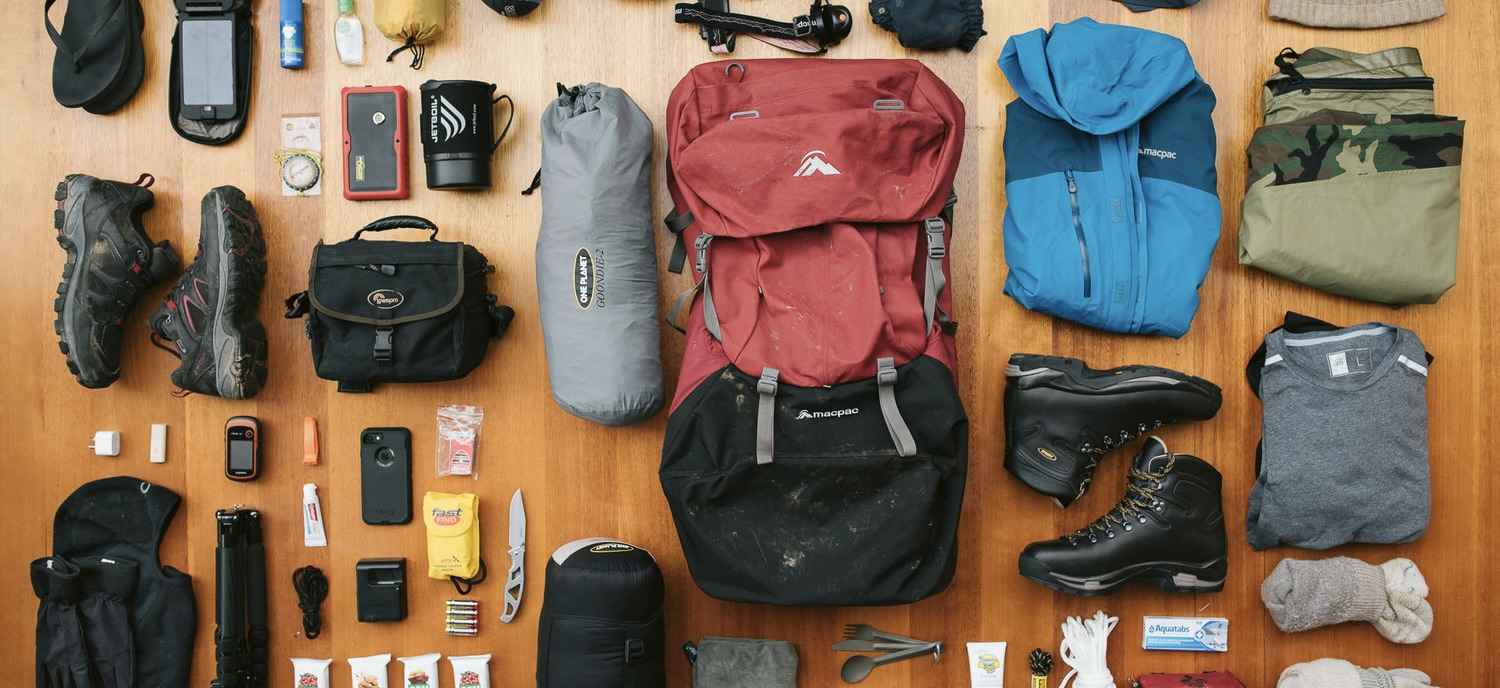
Money
The official currency of Nepal is the Nepalese Rupee (NPR). It's a good idea to carry some cash for small expenses, especially during the trek, as ATMs might not be available and many places do not accept credit cards. You can exchange money in Kathmandu or withdraw from ATMs in the city.
Cultural Etiquette
Nepalese people are friendly and welcoming, but it's still important to respect local customs and traditions. Dress modestly, especially when visiting religious sites, and ask for permission before photographing people.
With careful planning and preparation, your trip to Nepal can be a smooth, exciting, and unforgettable adventure. Happy traveling!
When to Go Nepal from the United Kingdom
Choosing the best time to visit Nepal from the United Kingdom largely depends on the activities you wish to undertake. The country's climate is primarily influenced by the monsoon season, which brings heavy rain from June to September. The most popular times to visit are the periods before and after the monsoon, namely the spring (March to May) and autumn (October to November).
Here's a month-by-month breakdown:
- Spring (March to May): This is one of the best times to visit Nepal. The weather is warm, and the hills are covered with colorful flowers. This is also a great time for wildlife viewing, particularly in Chitwan National Park. Mountain views can occasionally be obscured by clouds later in the season, but visibility is generally good in the early part of spring.
- Summer/Monsoon (June to September): This is the least popular time to visit Nepal due to the monsoon rains, which can result in landslides in certain areas and the closure of some trekking routes. However, the rain brings lush greenery, and it's an excellent time to visit for keen botanists. Note that flights and road travel can occasionally be delayed due to the weather during this period.
- Autumn (October to November): This is arguably the best time to visit Nepal, especially for trekkers. Post-monsoon, the skies are clear, offering stunning views of the mountains. The weather is also favorable, with warm days and cool nights. This is peak tourist season, so trails and teahouses can be busy, and it's recommended to book accommodation and flights well in advance.
- Winter (December to February): Winters in Nepal can be very cold, especially in the mountains. Many trekking routes are closed due to snowfall. However, in lower altitude areas, such as Kathmandu and Pokhara, the weather remains relatively mild, and it's a good time to explore these cities without the crowds of the peak seasons.
So, depending on what you want to see and do, you can pick the season that suits your needs best. But remember, regardless of the season, Nepal's stunning landscapes and warm culture offer memorable experiences year-round.
Choose Your Tour and Trek from the United Kingdom
Choosing the right tour and trek for your trip to Nepal from the UK involves considering your fitness level, interests, and the length of your trip. Here are some of the most popular options:
- Everest Base Camp Trek: This is the most famous trek in Nepal. It typically takes 12-14 days and offers breathtaking views of some of the world's highest peaks, including Mount Everest. The trek is moderately difficult and requires a good level of fitness. Along the way, you'll experience Sherpa culture and might even spot some Himalayan wildlife.
-
[block](2)
- Annapurna Circuit Trek: This 2-3 week trek is another popular choice. It's known for its diverse landscapes, ranging from lush subtropical forests and paddy fields to high-altitude deserts. The trek also includes crossing the Thorong La pass, the highest point of the circuit at 5,416 meters.
-
[block](107)
- Langtang Valley Trek: A shorter trek, usually completed in 7-8 days, Langtang Valley is less crowded but no less beautiful than the Everest and Annapurna regions. The trek offers superb views of Langtang Lirung, Ganesh Himal, and other peaks. The valley is also home to Langtang National Park, where you can spot a variety of wildlife.
-
[block](4)
- Ghorepani Poon Hill Trek: This is an excellent option for beginners or those with limited time. This 4-5 day trek in the Annapurna region is known for its stunning sunrise views over the Himalayas from Poon Hill.
-
[block](25)
- Manaslu Circuit Trek: A less crowded but increasingly popular trek, the Manaslu Circuit offers spectacular views of the Manaslu range and takes you through diverse landscapes and cultural experiences. The trek usually takes around 14-16 days.
-
[block](5)
After selecting your trek, it's important to choose a reputable tour company. They will manage all the logistical details of your trek, including permits, accommodation, meals, guides, and porters.
Booking Your Flight from the UK
Booking a flight from the United Kingdom to Nepal involves several steps. Here's a guide on how to go about it:
Decide Your Dates: Determine when you want to travel. As previously discussed, the best times to visit Nepal, especially for trekking, are the spring (March-May) and autumn (October-November).
Check Flights: Use flight search engines like Skyscanner, Google Flights, or Expedia to check flights from your preferred UK airport to Tribhuvan International Airport in Kathmandu, Nepal's main international airport.
Choose Your Airline: There are no direct flights from the UK to Nepal, but various airlines operate services with one or two stopovers. These include Qatar Airways (stopover in Doha), Turkish Airlines (stopover in Istanbul), and Emirates (stopover in Dubai), among others.
Compare Prices and Schedules: Compare prices, schedules, and the duration of stopovers. Also, consider the total travel time and how it fits with your plans.
Book Your Flight: Once you've chosen your flight, go ahead and book it. You'll need your passport details for this. It's usually possible to book directly on the airline's website, or you can book via the flight search engine or a travel agent.
Select Your Seats: If the airline allows seat selection at the time of booking, choose your seats. Consider whether you prefer window or aisle, and the proximity to the lavatories or exit rows.
Consider Baggage Allowance: Check the airline's baggage policy. If you plan to carry trekking gear, ensure you're within the weight limit. If not, it might be necessary to pay for extra baggage.
Plan Your Stopover: If your flight includes a long stopover, consider how to spend this time. Some airlines offer hotel accommodations for long connections, or you might prefer to explore the city during the layover.
Check-In Online: Most airlines offer online check-in 24-48 hours before departure. This can save you time at the airport.
Remember, prices tend to rise closer to the departure date, so it's best to book as early as possible. Also, ensure your passport is valid for at least six months beyond your planned departure from Nepal, as this is a requirement for entry.
Preparing for Your Trip
Once your flights and treks are booked, there are a few more steps to get ready for your trip to Nepal from the United Kingdom:
Passport and Visa
Make sure your passport is valid for at least six months beyond your planned departure from Nepal. As a UK citizen, you can obtain a tourist visa on arrival, but to avoid any potential delays, consider applying for your visa online before you leave.
Travel Insurance
Ensure you have comprehensive travel insurance that covers medical emergencies, trip cancellation, lost luggage, and evacuation, especially if you're trekking at high altitudes. Double-check the policy to confirm you're covered for all your planned activities.
Health Precautions
Visit your doctor or a travel clinic to discuss any vaccinations or medications you might need for your trip. Recommended vaccinations often include hepatitis A, typhoid, and tetanus. You might also need anti-malaria medication or altitude sickness pills, depending on your itinerary.
Packing
Pack according to the activities you plan to do and the season in which you're traveling. Essential items for trekking include hiking boots, warm and breathable clothing, a water purifier, sunscreen, and a first-aid kit. Don't forget travel adapters for your electronic devices (Nepal uses type C, D and M plugs), and consider bringing a power bank as electricity can be unreliable in some areas.
Money
While credit cards are accepted in cities and larger towns, it's a good idea to carry some Nepalese Rupees for smaller expenses and in rural areas. You can withdraw money from ATMs or exchange GBP for NPR in Kathmandu.
Learn About the Culture
Gain some basic knowledge about Nepalese customs and traditions to respect the local culture. For instance, when visiting temples, dress modestly and remove your shoes before entering.
Plan Your Itinerary
While your tour company will handle the details of your trek, think about what you'd like to do in your spare time or if you have extra days in Kathmandu or Pokhara. Attractions include the Boudhanath Stupa, Kathmandu Durbar Square, the Thamel district, or a boat ride on Phewa Lake.
Stay Connected
Check with your mobile provider about international roaming charges. Alternatively, consider buying a local SIM card when you arrive in Nepal.
Preparing thoroughly will ensure your trip to Nepal is as smooth and enjoyable as possible. It's a beautiful country with friendly people and spectacular landscapes, so get ready for an unforgettable journey!
Nepal Visa for a British citizen
British citizens are required to have a visa to enter Nepal. There are a couple of ways to obtain a visa for Nepal as a UK citizen:
Visa on Arrival
Upon arrival at Tribhuvan International Airport in Kathmandu, British citizens can apply for a visa on arrival. Here are the steps involved:
Fill out the visa application form available at the airport or complete the online form before you travel.
You'll need to provide a passport photo. If you don't have one, there's a photo booth at the airport, but it's better to bring one with you to save time.
Pay the visa fee.
The fee for a 15-day multiple-entry visa was USD 30. The fee for a 30-day visa was USD 50, and for a 90-day visa, it was USD 125. Please note that these fees may have changed, so check the latest information. Payment should be in cash and is often only accepted in USD.
Visa in Advance
You can also apply for a visa before you leave the UK through the Embassy of Nepal in London. This can save time when you arrive in Kathmandu. Here's the process:
Download the visa application form from the embassy's website, fill it out, and attach a passport-sized photo.
Send the application form, your passport, and the visa fee (either by a postal order or bank draft payable to the Embassy of Nepal) to the embassy. You can also apply in person.
The embassy will process your application and, if approved, insert the visa in your passport.
For both visa on arrival and visa in advance, your passport must be valid for at least six months beyond your planned departure from Nepal.
Visa rules can change, so it's best to check the latest information on the website of the Embassy of Nepal in London or the Department of Immigration of Nepal before your trip. Also, note that if you plan to stay longer than your visa's validity, you'll need to apply for a visa extension at the Department of Immigration in Kathmandu or Pokhara.
Cost of tour and trek in Nepal, including flights from the United Kingdom
The cost of a tour and trek in Nepal, including flights from the United Kingdom, can vary significantly based on various factors such as the time of year, the specific tour or trek chosen, the level of accommodation, and additional activities or services.
Flights: Round-trip flights from the UK to Kathmandu generally cost between £500 and £800, depending on the time of year, the airline, and how far in advance you book. However, this price can increase during peak tourist seasons.
Tour/Trek Packages: Tour packages can range from around £400 for a shorter, basic tour to several thousand dollars for a longer, more luxurious experience or a challenging trek like the Everest Base Camp or Annapurna Circuit. For example, a 10-day tour of cultural sites might cost around £ 800-£1,500, whereas a 15-day Everest Base Camp trek might cost £1,200-£2,000.
Remember, the cost of the trek often includes accommodation, meals, guide, and porter services, permits, and local transportation, but it's important to check exactly what's included in the price.
Additional Costs: Additional costs to consider include:
- Visa: The cost for a Nepalese visa for UK citizens ranges from $30 for a 15-day visa up to $125 for a 90-day visa.
Travel insurance: The cost of travel insurance depends on the coverage, but for a comprehensive policy, you might expect to pay between £50 and £150. - Tips for guides and porters.
- Personal expenses like souvenirs, snacks, drinks, and meals are not included in the tour package.
- Additional activities, such as paragliding, rafting, or cultural shows.
On average, you might expect a trip to Nepal from the UK, including flights, a tour or trek, and additional expenses, to cost somewhere in the region of £2,000 to £5,000 per person. However, the cost could be lower or higher depending on the factors outlined above.
Time takes to fly from the UK to Nepal
The total travel time from the United Kingdom to Nepal varies based on factors such as the specific airports used, the airline, and the duration and location of any stopovers.
There are no direct flights from the UK to Nepal. Flights typically involve at least one stopover, commonly in cities like Dubai, Doha, Istanbul, or Delhi.
The flight duration from London to Kathmandu, for instance, is typically around 12-15 hours including the stopover. The first leg of the journey, from London to the stopover city, is usually between 6-8 hours. The second leg, from the stopover city to Kathmandu, can range from 4-7 hours.
The stopover can add several hours to the total journey time, depending on its duration. Some flights may have layovers of just an hour or two, while others may be much longer.
It's worth noting that Kathmandu's Tribhuvan International Airport is located in a challenging terrain and is susceptible to delays and disruptions due to weather conditions, so it's always a good idea to allow some flexibility in your travel plans.
Please ensure to check the latest flight schedules with your chosen airline or booking platform, as the flight duration can vary.
Popular tourist destinations in Nepal for British Citizens
Whether you're a British citizen or from any other part of the world, Nepal's rich cultural heritage, stunning landscapes, and warm hospitality make it a popular destination for all travelers. Here are some of the most popular tourist destinations in Nepal for British citizens:
Kathmandu Valley: Kathmandu, the capital of Nepal, and its surrounding valley, are filled with ancient temples, palaces, and cultural sites. The valley boasts seven UNESCO World Heritage Sites, including Kathmandu Durbar Square, Patan Durbar Square, Bhaktapur Durbar Square, Boudhanath Stupa, Swayambhunath Stupa, Pashupatinath Temple, and Changu Narayan Temple.
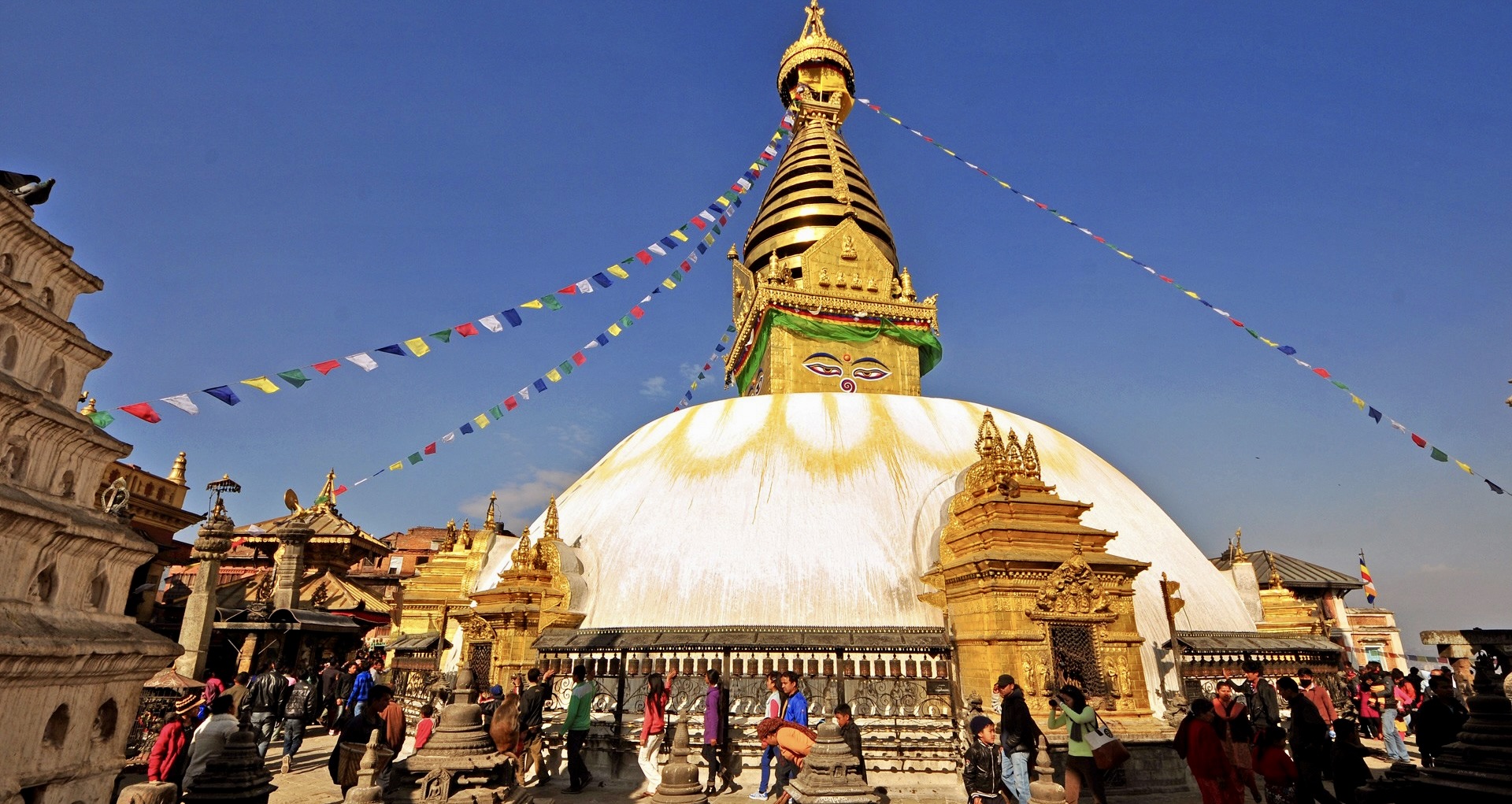
Pokhara: Known as the gateway to the Annapurna region, Pokhara is famed for its tranquil lakes, stunning mountain views, and adventure activities. Lake Phewa, the World Peace Pagoda, Sarangkot for sunrise views, and the International Mountain Museum are must-see sites.
Trekking Regions: Nepal is a paradise for trekkers, with trails that cater to all levels of fitness and experience. The Everest Base Camp Trek, Annapurna Circuit, Langtang Valley Trek, and Manaslu Circuit Trek are some of the most popular.
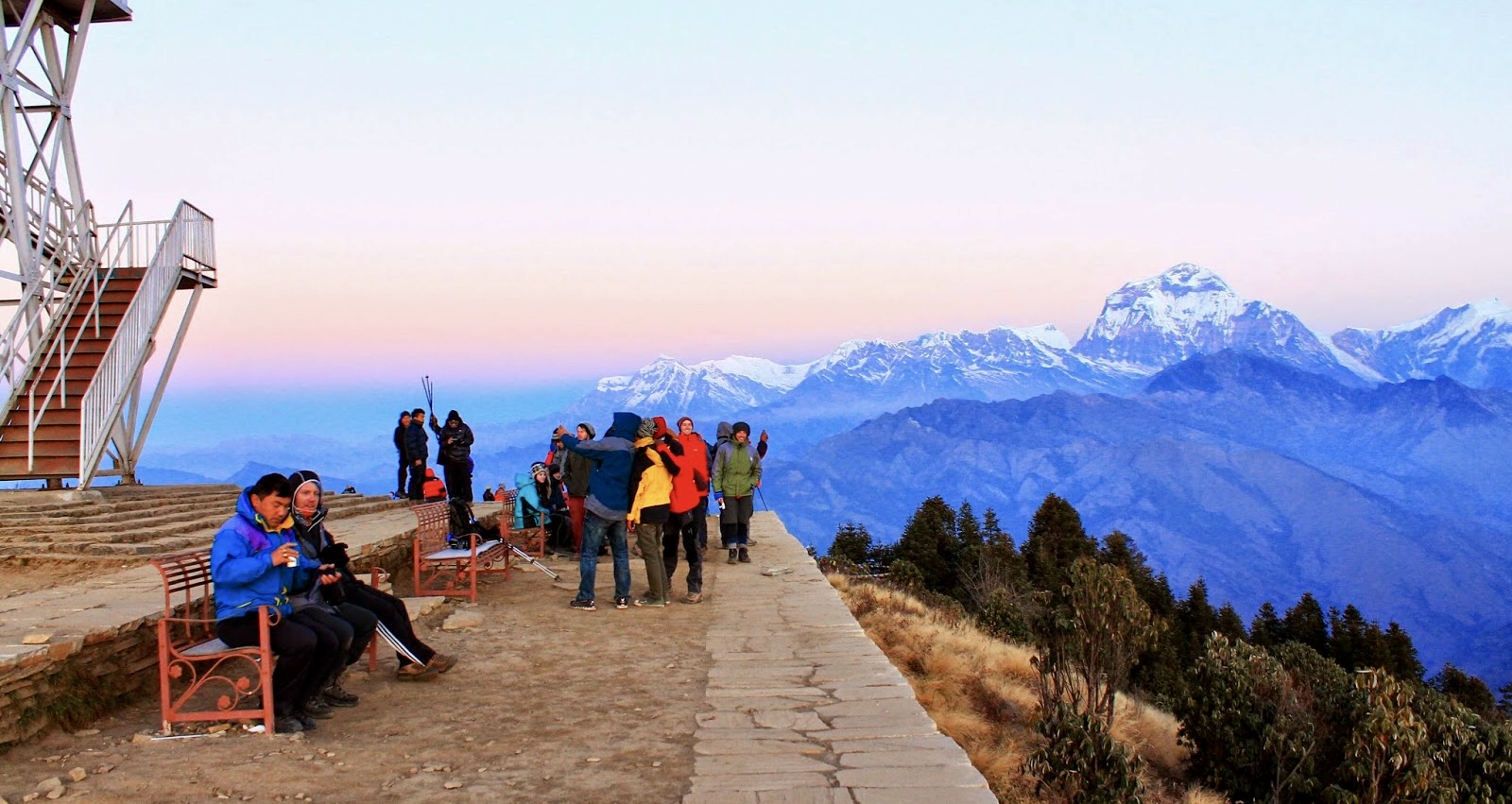
Chitwan National Park: For wildlife enthusiasts, Chitwan National Park in the Terai lowlands offers jungle safaris where you can spot one-horned rhinos, Bengal tigers, and a variety of bird species. The park is a UNESCO World Heritage Site.
Lumbini: Known as the birthplace of Buddha, Lumbini is a pilgrimage site that holds significant religious importance. The serene Mayadevi Temple, Ashoka Pillar, and various international Buddhist monasteries are major attractions here.
Upper Mustang: Often referred to as the 'Last Forbidden Kingdom', Mustang offers a blend of Tibetan and Nepalese cultures set against a backdrop of starkly beautiful landscapes.
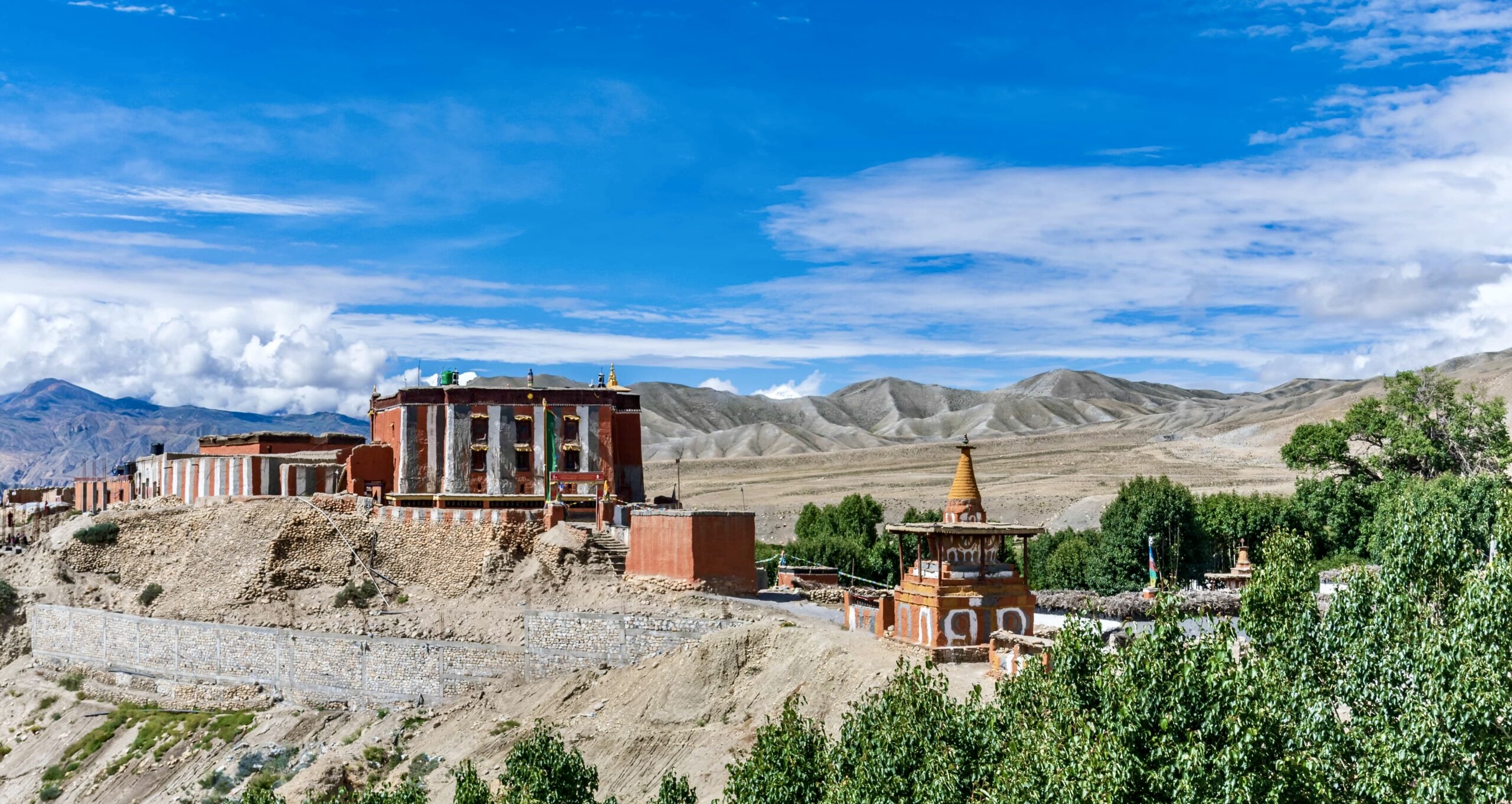
Bandipur: A well-preserved old town, Bandipur lies between Kathmandu and Pokhara. It offers Newari culture, excellent mountain views, and short hiking opportunities.
British citizens, like all tourists, are advised to respect local customs and traditions while visiting these destinations.
The local currency in Nepal and the use of GBP
The local currency in Nepal is the Nepalese Rupee (NPR). The rupee is subdivided into smaller units known as paisa. Banknotes are issued in denominations of 5, 10, 20, 50, 100, 500, and 1000 rupees, and coins are issued in denominations of 1, 2, 5, and 10 rupees.
British pounds (GBP) are not generally accepted for everyday transactions in Nepal. However, pounds can be exchanged for Nepalese rupees at numerous locations throughout the country. These include banks, hotels, and licensed money exchange offices. The exchange rate can vary between these places, so it's worthwhile to check a few different locations for the best rate.
When exchanging money, be sure to get a receipt, as you may need it to convert any remaining rupees back to pounds upon leaving the country.
It's important to note that ATMs are widely available in cities like Kathmandu and Pokhara, and they dispense cash in NPR. Major credit cards are also accepted in many hotels, restaurants, and shops in larger cities, although it's always good to have some cash on hand, especially when traveling in more remote areas.
Always be mindful of the current exchange rates and understand the foreign transaction fees associated with your bank or credit card provider when traveling abroad.
Safe for UK citizens to travel to Nepal
Yes, it is generally safe for UK citizens, and indeed all foreign tourists, to travel to Nepal. The country is known for its hospitality and tourists are generally well-received. However, like any destination, it's essential to take certain precautions and remain aware of your surroundings.
Here are a few safety considerations:
Travel Advisories: Always check the latest travel advisories issued by the UK Foreign, Commonwealth & Development Office before planning your trip.
Health: Prior to travel, ensure you're up-to-date on routine vaccines, and consider vaccines for Hepatitis A and Typhoid due to potential exposure through contaminated food or water in Nepal.
Altitude Sickness: If you plan on trekking, be aware of the risk of altitude sickness, which can be life-threatening if not treated promptly. Ensure that your itinerary allows time for gradual acclimatization, and consider purchasing travel insurance that covers emergency helicopter evacuation.
Road Safety: Road conditions in Nepal can be poor and traffic rules are not always adhered to, so take care if driving or crossing roads. Long-distance travel, particularly at night, can be risky due to poorly maintained vehicles and roads.
Crime: Petty crimes such as pickpocketing and bag snatching can occur, particularly in busy tourist areas. Be vigilant with your belongings, avoid showing off expensive items, and don't carry large sums of cash.
Natural Disasters: Nepal is in a seismic zone and is prone to earthquakes. It's important to familiarize yourself with safety procedures in the event of a quake. The monsoon season (June to September) can also bring landslides and flooding, especially in the Terai region.
Trekking Safety: Always trek with a reputable agency, hire a local guide, never trek alone, and inform your embassy or someone reliable of your trekking plan.
It's recommended to have comprehensive travel insurance that covers all potential risks, including medical treatment and evacuation, trip cancellation, and lost or stolen items.
While these precautions may seem daunting, it's important to remember that thousands of tourists, including many from the UK, travel to Nepal each year without incident and have wonderful experiences exploring the country's beautiful landscapes and vibrant culture.
Best trekking routes and hiking trails in Nepal
Nepal offers some of the best trekking routes in the world, with options to suit all levels of experience and fitness. Here are some of the most popular trekking routes and hiking trails:
Everest Base Camp Trek: This is probably the most famous trek in the world, offering the chance to stand at the foot of the highest mountain on Earth. The trek usually takes around 12-14 days, starting and ending at Lukla, and passing through stunning landscapes, Sherpa villages, and Buddhist monasteries. The highlight is reaching the Everest Base Camp and climbing Kala Patthar for a panoramic view of Mount Everest.
Annapurna Circuit Trek: Known for its diverse landscapes and cultures, this trek takes you around the majestic Annapurna massif. The circuit typically takes 12-20 days, depending on the route chosen. It includes a challenging crossing of the Thorong La Pass, one of the highest trekking passes in the world, and visits to the pilgrimage site of Muktinath.

Langtang Valley Trek: A less crowded trek that offers beautiful mountain views, lush forests, and Tibetan-influenced culture. The trek typically takes 7-10 days. One of the highlights is Kyanjin Gompa, a monastery set against a backdrop of towering peaks.
Manaslu Circuit Trek: A challenging trek around the eighth-highest mountain in the world, offering a mix of cultural diversity and stunning Himalayan scenery. The trek usually takes around 14-18 days, crossing the Larkya La Pass, one of the most dramatic passes crossing the Himalayas.
Ghorepani Poon Hill Trek: A relatively easy and short trek, perfect for beginners or those with limited time. The trek typically takes 4-6 days, offering a glimpse of traditional Gurung culture and panoramic views of the Annapurna range from Poon Hill.
Upper Mustang Trek: This trek takes you to the remote and ancient kingdom of Mustang, known as the 'Last Forbidden Kingdom'. The landscape here is unique, characterized by barren deserts, rock formations, and ancient monasteries. The trek usually takes around 12-16 days.
Gokyo Lakes Trek: An alternative to the popular Everest Base Camp trek, the Gokyo Lakes Trek offers stunning views of Everest and other high Himalayan peaks, as well as the opportunity to see the largest glacier in Nepal and the emerald-green Gokyo Lakes.
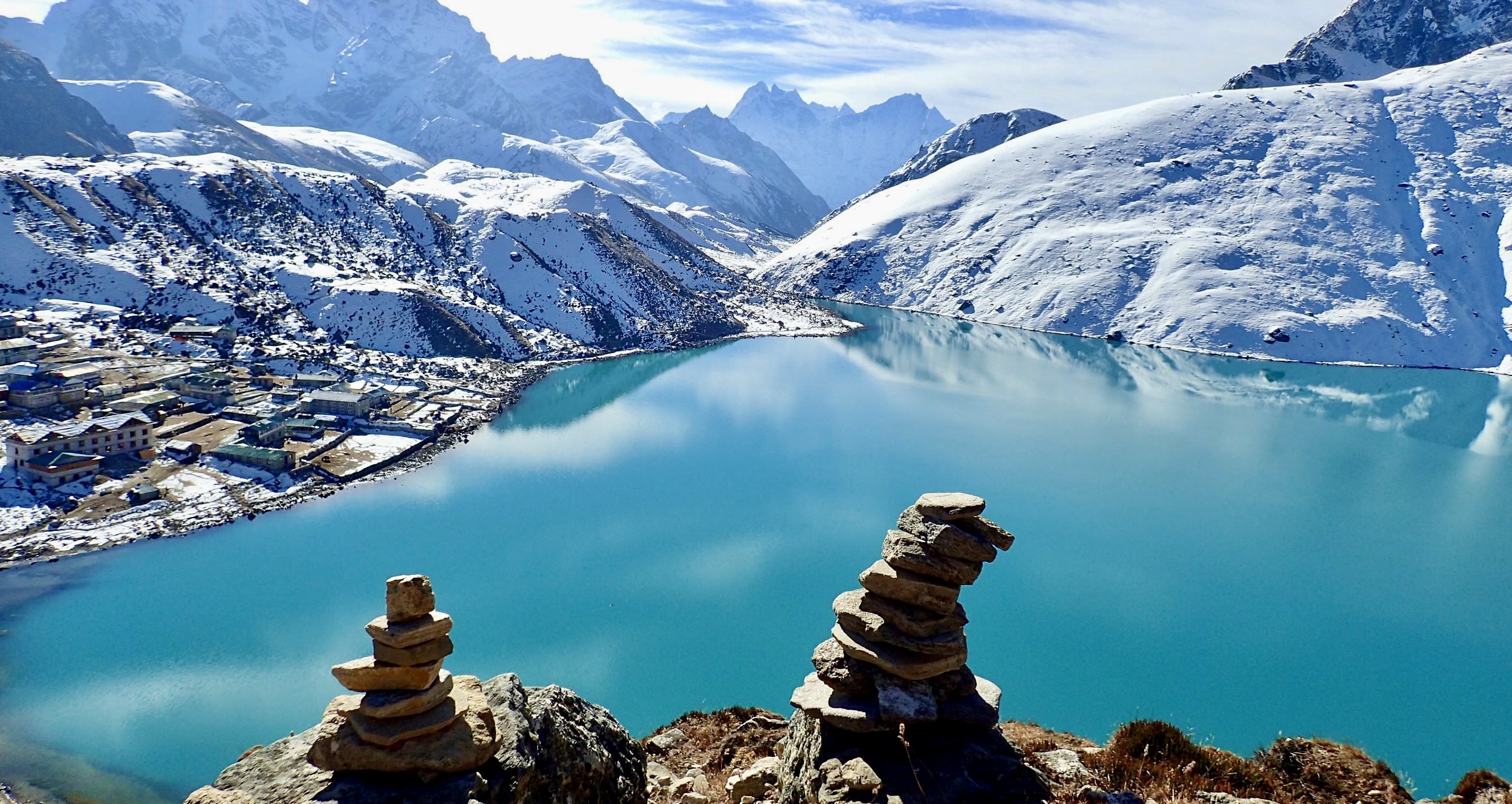
Kanchenjunga Circuit Trek: For those seeking a remote and challenging trek, the Kanchenjunga Circuit explores the area around the third-highest mountain in the world. The trek usually takes around 20-25 days, offering diverse landscapes and the chance to spot wildlife such as snow leopards and red pandas.
These treks require a certain level of physical fitness, and some require previous trekking experience. It's also essential to take time to acclimatize to the high altitude to avoid altitude sickness. Always trek with a reliable company and experienced guide, and ensure you have the necessary permits for your chosen route.
Luxury tour and trek in Nepal for UK (British) citizens
Nepal is a land of diverse experiences, and while it's often associated with rugged trekking, there are also plenty of opportunities for luxury travel. For British citizens or anyone else interested in a bit of comfort and indulgence, here are some options for luxury tours and treks in Nepal:
Luxury Everest Base Camp Trek: This trek provides the opportunity to experience the grandeur of Everest while enjoying higher quality accommodations and services than the standard trek. You'll stay in luxury lodges with comfortable beds, Western-style bathrooms, and fine dining. This trek might also include a helicopter flight back to Kathmandu from Gorak Shep, providing breathtaking aerial views of the Himalayas.
Kathmandu Valley Luxury Tour: Enjoy the rich cultural heritage of Kathmandu, Patan, and Bhaktapur with a stay in top-tier hotels such as Dwarika's Hotel in Kathmandu, famous for its traditional architecture and fine dining. Private tours can be arranged to UNESCO World Heritage Sites, art workshops, and hidden gems of the valley.
Luxury Wildlife Safari in Chitwan National Park: Experience the jungles of Nepal from the comfort of a luxury resort. During your stay, you can embark on elephant-back safaris, jungle walks, and bird-watching tours. In the evening, enjoy cultural performances by local Tharu communities.
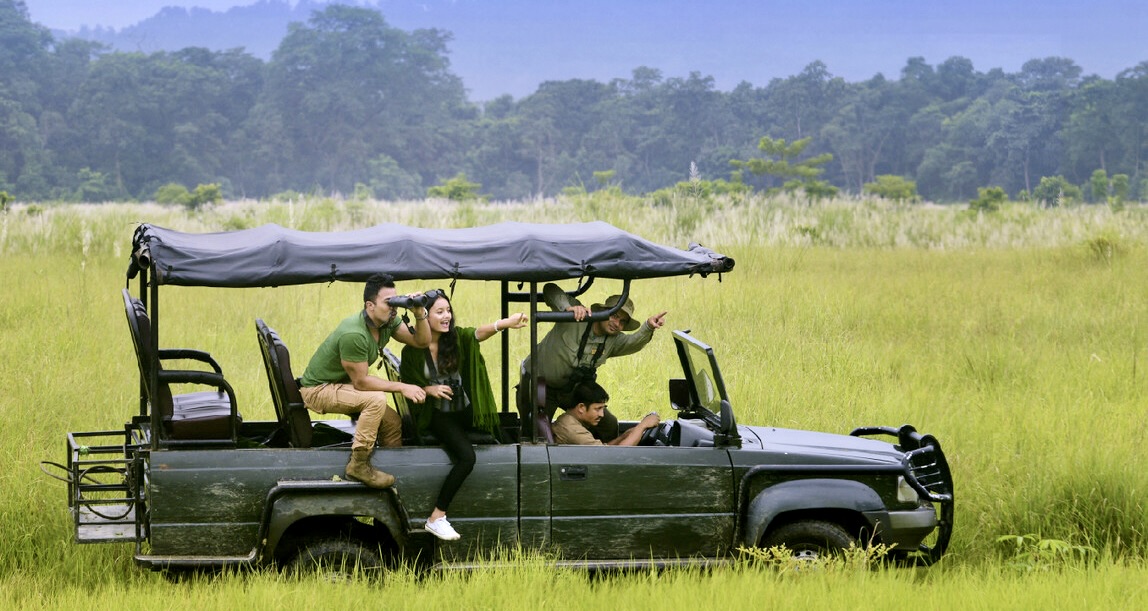
Luxury Annapurna Panorama Trek: This trek offers the opportunity to witness the beauty of the Annapurna range while staying in high-quality mountain lodges. These lodges offer private rooms, attached bathrooms, and delicious cuisine, a notch above the standard teahouses on other treks.
Luxury Tours in Pokhara: Pokhara, the adventure capital of Nepal, has a range of luxury accommodations near the beautiful Phewa Lake. Activities can include private boating tours, paragliding, yoga sessions, or helicopter tours to Annapurna Base Camp.
Everest Helicopter Tour: For those who want a close view of Everest but prefer not to trek, a luxury helicopter tour is an excellent option. You'll fly over breathtaking landscapes, land at Everest Base Camp or nearby Kalapathar, and enjoy breakfast with a view of Everest at a hotel in Syangboche.
Remember, "luxury" in the mountains of Nepal doesn't quite match up to city definitions - while the accommodation and service will be the best available in the region and significantly above the standard trekking experience, don't expect five-star hotels once you're on the trail. The charm and authenticity of the experience more than make up for it!
Frequently Asked Questions (FAQs) for UK Travelers to travel Nepal
Q: Do I need a visa to travel to Nepal?
Yes, UK citizens require a visa to enter Nepal. You can obtain a visa on arrival at Kathmandu's Tribhuvan International Airport, or you can apply in advance through the Nepalese Embassy in the UK.
Q: Is it safe to travel to Nepal?
Yes, it's generally safe to travel to Nepal, but like any destination, it's important to stay updated on current safety advisories and take common-sense precautions. Petty crime, road safety, and health risks like altitude sickness are important considerations.
Q: When is the best time to visit Nepal?
A: Nepal can be visited all year round, but the best time largely depends on what you plan to do. For trekking, the best periods are pre-monsoon (March to May) and post-monsoon (September to November), when the weather is generally clear and dry.
Q: What currency is used in Nepal?
A: The currency in Nepal is the Nepalese Rupee (NPR). British Pounds can be exchanged for NPR at banks, hotels, and licensed exchange offices in Nepal.
Q: What kind of power plugs and sockets are used in Nepal?
A: Nepal uses types C, D, and M sockets. The standard voltage is 230 V and the standard frequency is 50 Hz. UK travelers will need a power plug adapter.
Q: Can I drink tap water in Nepal?
A: No, tap water in Nepal isn't considered safe to drink. It's recommended to drink bottled water and ensure that the bottle is sealed when you buy it.
Q: What should I pack for a trip to Nepal?
A: What to pack depends on the activities you're planning and the time of year. For trekking, you'll need good hiking boots, warm clothing layers, a raincoat, sun protection, a reusable water bottle, and snacks. For city sightseeing, casual comfortable clothes are suitable.
Q: Do I need travel insurance for a trip to Nepal?
A: Yes, travel insurance is strongly recommended for all travelers to Nepal. Make sure your policy covers medical treatment and evacuation, trip cancellation, and loss or theft of belongings.
Q: Do I need any vaccinations before traveling to Nepal?
A: It's recommended to be up-to-date on routine vaccines and consider vaccines for Hepatitis A and Typhoid due to potential exposure through contaminated food or water in Nepal.
Q: Can I use my mobile phone in Nepal?
A: Yes, but you'll need to check with your provider about international roaming charges. Alternatively, you can buy a local SIM card on arrival. Make sure your phone is unlocked to accept a foreign SIM card.
So what are you waiting for? Start planning your Himalayan adventure today!
Luxury Trekking Package in Nepal
Adventure Sports Tour in Nepal
Everest Region Trekking Packages
If you need any further information, please contact us by email: at [email protected], Phone: at +977- 985 100 5129 (WhatsApp)